The Mosquito Guy: An In-depth Exploration of the Role
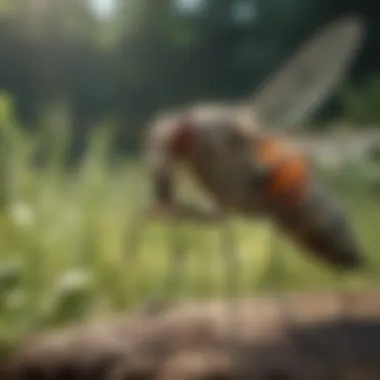
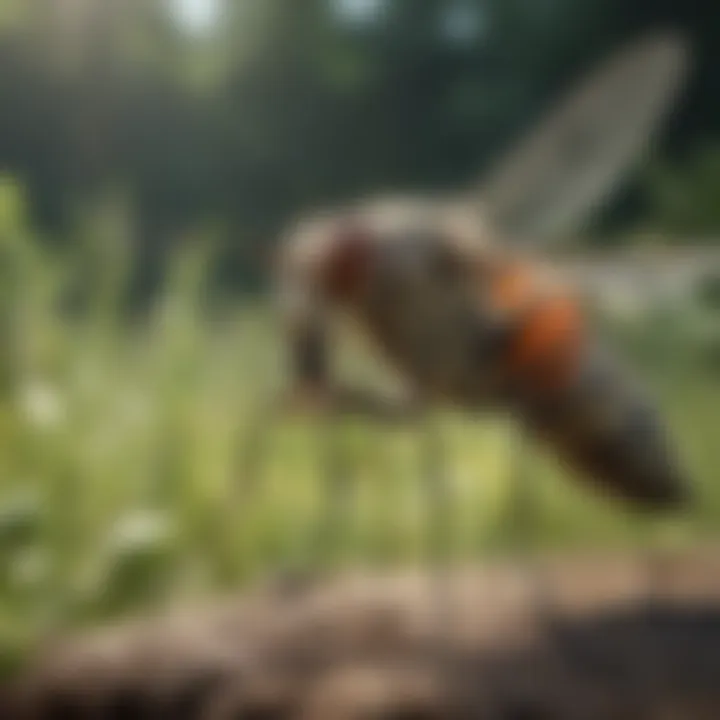
Preventive Pest Control Strategies
Pest control is an ongoing battle many homeowners encounter, and understanding preventive measures is key to maintaining a pest-free environment. The 'mosquito guy' recognizes that proactive strategies can significantly reduce the risk of pests invading your home. Let’s break down some vital preventive pest control methods that can safeguard your property.
House Exterior Protection
A strong defense begins outside. If your house isn’t sealed tight, it’s like throwing the door wide open for pests.
Tips for Sealing Cracks
Go around your home and look for any cracks or crevices — even small ones. Caulking is your best friend here. Fill in gaps around windows, doors, and where pipes enter your house. This small effort can prevent pests from making themselves at home.
Clearing Debris
Piled-up leaves, wood, or any debris near your house can attract pests. Keep the perimeter tidy. A clean space is less inviting for critters.
Preventing Pests From Entering
Ensure your screens are in good shape. Repair any tears in window screens and make sure doors close tightly. Installing door sweeps helps a lot. These simple measures can hinder a pest’s entry.
Yard Maintenance
Regular upkeep in your yard not only beautifies your space but also plays an essential role in pest control.
Essential Yard Care Routines
Keep your grass trimmed and plants well-placed. Mosquitoes love standing water, so after it rains, empty any container that collects water.
Methods for Keeping Yard Pest-Free
Consider native plants. They’re often more resilient against local pests and require less maintenance. Regularly check for areas that trap moisture, as those will surely attract mosquitoes and other unwelcome guests.
Indoor Cleanliness
Inside your home is where you can have the most control.
Expert Cleaning Tips and Techniques
Keep surfaces clean and crumbs cleared. Regular vacuuming and sweeping will help ensure pests don’t find a feast. Pay extra attention to the kitchen and dining areas — they can be a notorious hotspot for attracting pests.
Maintaining a Pest-Resistant Indoor Environment
Seal your food in airtight containers. Even small openings can allow pests to sneak in. Storing food properly is a crucial step in pest prevention.
Garbage Disposal
What you do with your waste plays a significant role in pest control.
Efficient Waste Disposal Methods
Use bins with tight-fitting lids to keep odors in and critters out. Regularly take out your trash, especially if you’re dealing with food waste.
Importance of Proper Garbage Disposal
The less appealing your garbage smells, the less likely it is to attract unwanted guests. Don’t overlook this simple but often ignored part of pest control.
Other Pest Prevention Strategies
Be creative in your approach to pest prevention.
Innovative Ways to Safeguard Your Home
Utilizing a mixture of vinegar and water as a cleaning solution not only sanitizes but can also deter certain pests. You can also plant pest-repelling herbs like basil or lavender around your yard or home.
"An ounce of prevention is worth a pound of cure."
Understanding these preventive measures is vital to keeping your home secure from pests. From your yard to your kitchen, every detail counts. By taking steps to establish a pest-resistant environment, you can enjoy a peaceful home free of mosquito annoyances and other pests.
Understanding the Mosquito Guy
Understanding the concept of the "Mosquito Guy" is pivotal for grasping the intricacies of mosquito management and the broader implications for both personal and public health. It reflects a blend of professional knowledge and personal engagement that shapes how society interacts with these insects. The Mosquito Guy extends beyond mere pest control; he represents a critical intersection of ecology, community health, and innovation. Understanding this figure allows homeowners and, in particular, housewives, to make informed decisions regarding pest management in their homes and neighborhoods. It emphasizes the need to view mosquitoes not just as nuisances, but as contributors to the ecosystem that must be approached with thoughtful strategies.
Defining the Mosquito Guy
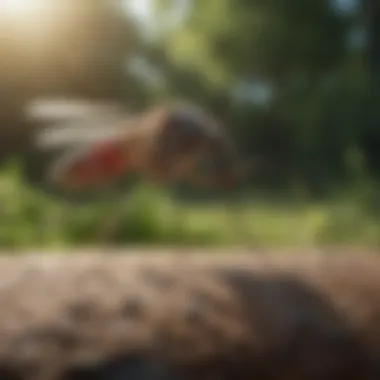
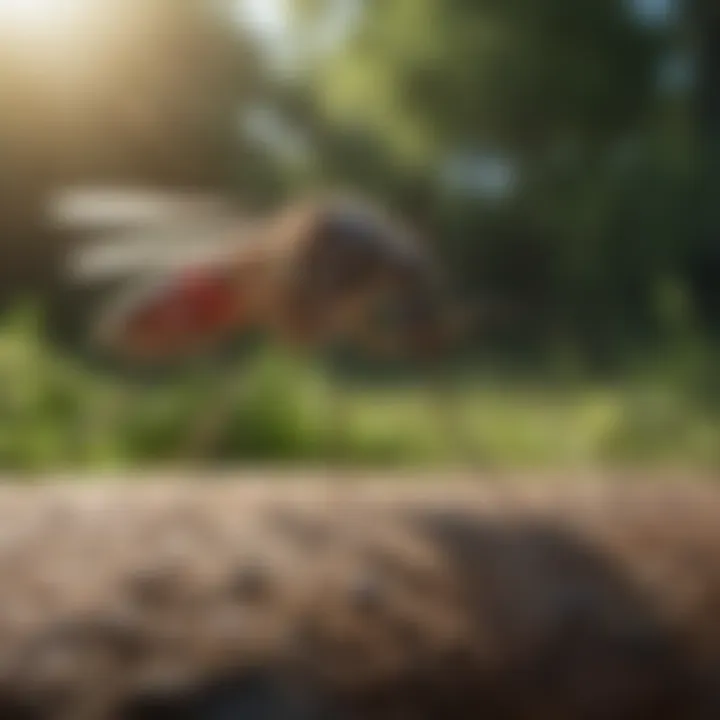
The term "Mosquito Guy" typically invokes an image of a professional pest controller. However, it encompasses a wider range of individuals who take on varying roles regarding mosquito interaction. At its core, the Mosquito Guy refers to anyone who actively engages with mosquitoes—be it through pest control services or as an enthusiast studying them, tracking their populations, or even delving into strategies that mitigate their impact.
For example, some might associate the Mosquito Guy with a neighborhood expert who educates others on best practices for mosquito prevention, teaching neighbors about removing standing water or using specific plants that naturally repel these insects. Moreover, in the age of technology, the Mosquito Guy may also pertain to researchers working in entomology, focusing on understanding mosquito behavior to develop new control methods.
Professional versus Enthusiast: A Distinction
When discussing the Mosquito Guy, it’s crucial to draw a line between professionals and enthusiasts. Professionals typically possess certification and training in pest control. They often work for pest management companies, armed with knowledge about legislation, safety practices, and effective chemical use. They provide tangible services, utilizing various techniques from traditional insecticides to innovative biological pest control agents.
Conversely, enthusiasts may not have formal training but share a passion for understanding mosquitoes and their impacts on health and the environment. These individuals might engage in community efforts, organize educational workshops, or participate in citizen science projects to monitor mosquito populations, identifying breeding sites or the spread of related diseases. Their contributions, while informal, play a significant role in raising awareness and can lead to substantial public health benefits.
"An informed community can often outsmart the most experienced Mosquito Guy, using knowledge and collaboration to minimize the presence of these pests effectively."
By distinguishing between these two roles, homeowners can better appreciate the resources available to them and consider the best approach to managing mosquito problems in their environments.
Ecological Context of Mosquitoes
Understanding the ecological context of mosquitoes is essential because it dives into their significant roles in nature, beyond just their pestilent reputation. Recognizing these roles can foster a more balanced perspective about these insects. Mosquitoes are often seen as nuisances, yet they are integral to various ecosystems, acting as both predators and prey. This duality influences numerous ecological interactions.
The Role of Mosquitoes in Ecosystems
Predators and Prey Dynamics
Mosquitoes occupy an intriguing niche in the food web. They serve as a food source for numerous species, including birds, bats, and amphibians. This dynamic demonstrates the interconnectedness of life; as predators consume mosquitoes, they help regulate mosquito populations. Maintaining this balance supports overall biodiversity. An essential point here is that despite being tiny, mosquitoes significantly impact larger ecological systems.
One key characteristic of the predator-prey dynamic is that it fosters a resilient ecosystem. When predators like dragonflies thrive due to ample mosquito populations, they control the numbers of these pests effectively. Yet, this balance can tip, leading to control methods being deemed necessary if populations surge.
The unique feature of this dynamic lies in its self-regulating nature. When predator populations have enough food, they flourish, ensuring that mosquitoes don’t proliferate uncontrollably. However, if the predators face decline, it can lead to an overwhelming mosquito presence, which can be problematic for humans.
Nutrient Cycling Impact
The impact of mosquitoes on nutrient cycling also deserves attention. Mosquito larvae contribute to nutrient turnover in aquatic ecosystems. They feed on organic debris in stagnant waters and in turn, serve as food for fish and other aquatic life. This activity is crucial for breaking down organic materials and making nutrients available for other living organisms.
A pivotal aspect here is that mosquitoes diest at various lifecycle stages, and their decay contributes to nutrient cycling. This nutrient cycling is beneficial because it supports the growth of plants, which in turn sustain various other species.
However, the unique feature of nutrient cycling by mosquitoes is somewhat paradoxical. While they contribute to ecosystem health, they can also disrupt it if their numbers get out of hand due to lack of predation or environmental changes.
Mosquito Species Diversity
Common Species Overview
Mosquito species diversity is a testament to nature's adaptability. This diversity results in mosquitoes that occupy various habitats and niches, leading to different behaviors and traits. For example, species like Aedes aegypti thrive in urban areas, while Culex pipiens tends to flourish in more rural environments. Understanding these common species helps in formulating effective control strategies tailored to specific circumstances.
A key characteristic of this diversity is its direct impact on control measures. Different species may respond differently to insecticides or traps, making it imperative for pest control strategies to be species-specific. A broad overview of common species equips homeowners and community leaders to implement the most efficient pest management practices.
The unique feature of species diversity in mosquitoes allows for a variety of ecological roles to be played, but it can complicate control efforts. As various species proliferate, understanding their individual behaviors and habitats is crucial for effective management.
Regional Variations
Regional variations in mosquito populations further complicate the landscape. Different climates, vegetation, and water sources create a tapestry of habitats that can support varying species and populations. In tropical areas, you may find a greater diversity due to favorable breeding conditions, whereas in colder climates, only a few species can survive.
One important characteristic of regional variations is how they influence mosquito behaviors. In hotter climates, mosquitoes might be active at different times compared to their counterparts in temperate regions, leading to different patterns of human interaction.
The unique aspect of these regional differences can facilitate targeted public health measures. By understanding which species are prevalent in certain areas, health authorities can devise context-specific solutions. Conversely, it can pose challenges when one is dealing with a mobile population that shifts with seasons or climate changes.
In essence, the ecological context of mosquitoes includes a complex interplay of predator-prey dynamics and nutrient cycling, along with species diversity shaped by local environments. Understanding these aspects offers vital insights for effective pest management strategies and a deeper appreciation of their ecological importance.
This deeper exploration of mosquitoes’ ecological roles not only educates but also encourages careful management. Respecting their roles while seeking to control their impact on human health is a balancing act, and awareness is the first step.
Pest Control Methods and Innovations
In the fight against mosquitoes, understanding the pest control methods and innovations available is vital. These techniques not only address the nuisance and health risks mosquitoes pose but also strive to strike a balance with the environment. It’s this blend of tradition and innovation that shapes effective strategies, ultimately leading to healthier communities and landscapes.
Traditional Pest Control Practices
Traditional pest control practices focus on immediate, efficient methods that have been in use for many decades. This includes both chemical insecticides and biological control agents.
Chemical Insecticides
Chemical insecticides are a cornerstone of traditional mosquito control. They are engineered substances designed to exterminate or repel insects. A key characteristic of chemical insecticides is their rapid action—mosquitoes often die within hours of exposure. This is beneficial for quick eradication, particularly in areas experiencing mosquito-borne diseases like dengue fever or malaria.
One unique feature of these chemicals is their various modes of action. Some target the nervous system of the insect, causing paralysis and eventual death. While highly effective, these products can come with drawbacks. They sometimes are harmful to beneficial insects, pets, and even humans if not used properly.
- Pros: Rapid effectiveness, vast availability.
- Cons: Risk of resistance developing, potential harm to non-target species.
Biological Control Agents
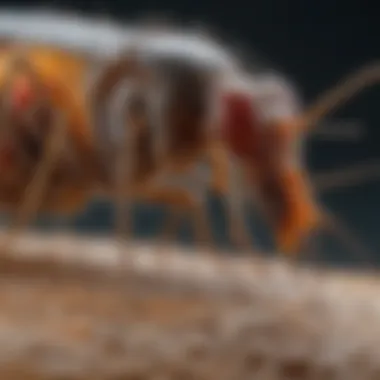
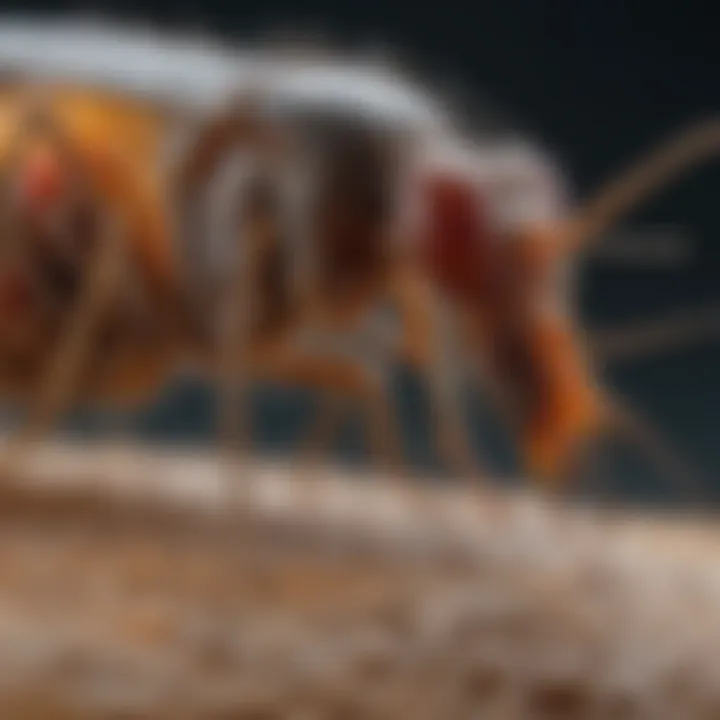
On the other side of the coin, biological control agents offer a more eco-friendly approach to managing mosquito populations. These agents involve using natural predators, such as fish, that feed on mosquito larvae. One key characteristic of biological agents is their compatibility with ecosystems; they do not introduce synthetic chemicals into the environment, making them safer for wildlife and humans alike.
Biological control is often regarded as sustainable, as it can reduce mosquito populations over time without the adverse side effects associated with chemical insecticides. However, the unique feature of biological control agents is their dependence on natural life cycles, which means it can take longer to achieve noticeable results.
- Pros: Environmentally friendly, promotes biodiversity.
- Cons: Slower action, requires understanding of ecosystem dynamics.
Emerging Technologies in Mosquito Control
With an eye on the future, emerging technologies in mosquito control are introducing new ways to tackle this often-treacherous pest. Techniques like gene editing and targeted sterilization methods indicate a significant shift towards more advanced, less invasive strategies.
Gene Editing Techniques
Gene editing techniques represent a groundbreaking approach in mosquito control. Techniques such as CRISPR allow scientists to edit the genome of mosquitoes to make them incapable of transmitting diseases. This is a popular choice for its potential to significantly reduce the incidence of vector-borne diseases, an increasingly urgent concern in public health.
A unique feature of gene editing is its precise targeting. Unlike broad-spectrum insecticides, which may unintentionally affect numerous organisms, gene editing can selectively address the genetic makeup of mosquitoes themselves. Despite its promise, there are concerns about the long-term consequences this may have on ecosystems and potential ethical implications regarding 'playing God' with nature.
- Pros: Targeted solution with potential for eradication of specific diseases.
- Cons: Ethical issues, ecological risks need thorough assessment.
Targeted Sterilization Approaches
Targeted sterilization approaches take another innovative route by rendering mosquitoes sterile, thereby reducing their ability to reproduce. This method involves the use of radiation or chemicals to sterilize male mosquitoes, who then mate with females, leading to an eventual decline in the mosquito population.
The key characteristic of targeted sterilization is its capacity to control mosquito populations without the need for harmful chemicals that could jeopardize other species. This method appeals to those looking for results with minimal ecological impact. However, challenges exist regarding achieving effective coverage and the costs involved in implementing such programs on a large scale.
- Pros: Reduces mosquito populations with minimal collateral damage.
- Cons: Implementation complexity, requires sustained efforts for efficacy.
Overall, understanding both traditional practices and groundbreaking innovations in mosquito control paints a comprehensive picture of the strategies employed by "the mosquito guy". Each method comes with its own set of ethics and effectiveness, ultimately opening the door for a wider discussion on how best to manage these persistent pests.
Health Implications Related to Mosquitoes
Understanding the health implications related to mosquitoes is crucial, especially as they demonstrate a notable impact on both individual and public health levels. As members of the environment, mosquitoes contribute to the transmission of various diseases that can endanger lives and strain healthcare resources. By unraveling the complexities of how these pests affect communities, we can further appreciate the role of the mosquito guy in tackling these challenges.
Disease Transmission and Public Health
Vector-Borne Diseases Overview
Vector-borne diseases are a significant concern when discussing mosquitoes. These diseases, which are transmitted through mosquito bites, include notorious illnesses like malaria, dengue fever, and Zika virus. The key characteristic of these diseases is their mode of transmission, primarily relying on the mosquito as a host vector. This makes understanding their lifecycle and habits essential to interrupting disease spread.
One of the most beneficial aspects of appreciating vector-borne diseases in this article is that it opens the door to more informed discussions about prevention and control. Each disease possesses unique features that influence how they propagate within different environments and populations. For instance, malaria, which relies on Anopheles mosquitoes, is prevalent in tropical regions, making geographic awareness pertinent in health discussions.
However, there are disadvantages too; the complexity of these diseases often leads to a knowledge gap within communities, preventing effective preventive measures from being adopted. Thus, a thorough overview of vector-borne diseases is indispensable for understanding their impact on public health and the motivation for effective management strategies.
Preventative Strategies
Preventative strategies are essential to combat the transmission of mosquito-borne diseases. These strategies include methods like using insect repellent, installing screens on windows, and employing mosquito nets while sleeping. The key characteristic of these approaches is their proactive nature, emphasizing the importance of taking steps ahead of an outbreak rather than reacting post-infection.
The unique feature of preventative strategies is that they can often be implemented at the community level, making them accessible to nearly everyone. Encouraging residents to engage in initiatives like eliminating standing water in yards addresses the mosquitos at their breeding sites, effectively reducing their populations. However, the disadvantages sometimes lie in the realization that these strategies require consistent action and community cooperation to see lasting results.
Impact of Mosquito Control on Communities
Community Health Initiatives
Community health initiatives play a pivotal role in addressing the implications of mosquitoes in public health. They create programs aimed at educating populations on the dangers of mosquito-borne diseases, often targeting vulnerable groups such as children and the elderly. These initiatives help disseminate knowledge about personal protection measures, which can significantly reduce transmission rates.
By fostering a sense of communal responsibility, community health initiatives can be seen as a beneficial choice for our article. They bring people together, allowing for shared experiences and resources that can actively improve the well-being of all.
However, the unique features of these initiatives also have their drawbacks. Sometimes, the level of engagement may vary; some communities flourish with high participation rates, while others struggle to motivate residents, leaving gaps in the effectiveness of the initiative.
Stakeholder Engagement
Stakeholder engagement is crucial for the success of mosquito control efforts. It encompasses collaboration among local governments, healthcare providers, community groups, and the public itself. Effective engagement can lead to a more coordinated approach to tackling the issues posed by mosquitoes.
The key characteristic of stakeholder engagement is its ability to leverage varied expertise and resources, creating a comprehensive strategy to combat vector-borne diseases. This collaborative approach is undoubtedly a popular choice in this article, especially given its potential for fostering sustainable changes in public health policies.
However, one of the unique features that can also become a disadvantage is the constantly changing dynamics of stakeholder relationships. Conflicting interests may arise, making it challenging to maintain a unified front in the battle against mosquitoes, thus potentially hindering the effectiveness of control measures.
The Social Perception of Mosquitoes
The perception surrounding mosquitoes is a double-edged sword, often swinging between disdain and fascination. While these tiny insects are universally regarded as pests, the narratives woven around them reveal much about human interaction with nature. In this context, understanding the social perceptions related to mosquitoes can shed light on public attitudes toward pest control and ecological balance. It’s crucial to consider how these views shape not only individual behaviors but also broader societal approaches to vector management.
Cultural Narratives Surrounding Mosquitoes
Folklore and Mosquitoes
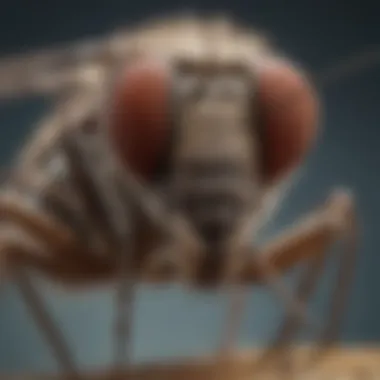
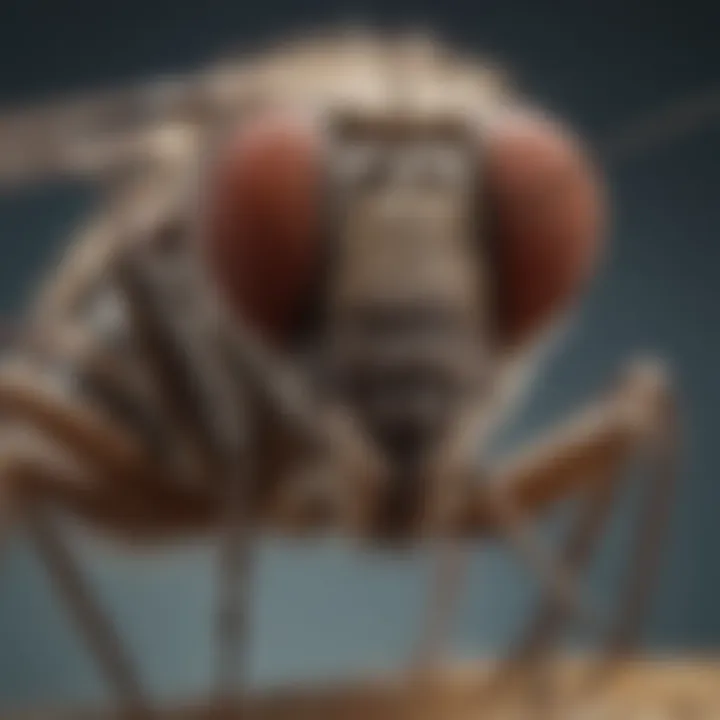
Folklore surrounding mosquitoes often reflects cultural attitudes toward nature's intricacies. In various regions, mosquitoes are common subjects of stories that embody both the beauty and danger of the environment. For example, in some African tales, mosquitoes are perceived as messengers of the ancestors, symbolizing life and death. This represents a unique shift from merely viewing them as nuisances to recognizing their role within a more complex narrative.
This perspective highlights the interplay between humans and the natural world—a fundamental aspect beneficial for this article. It is crucial because it encourages readers to explore deeper meanings behind these insects, transcending the one-dimensional view of them as mere pests. Moreover, such stories often carry moral lessons, teaching respect for all living things, even those as bothersome as mosquitoes. However, one downside might be the potential glamorization of what are indeed harmful vectors of disease.
Media Representation
Media portrayal of mosquitoes often leans towards the dramatic—a trend that shapes public perceptions significantly. Whether in documentaries, films, or social media, mosquitoes are frequently shown as vectors of threats like malaria and Zika virus, ingraining a fearful image in the public mindset. This characteristic of media representation serves the article's goal well as it prompts conversations about preventive measures and the importance of vigilant pest control.
Yet, the media's focus can oversimplify the complex ecological roles these insects play. They aren't just harbingers of disease; they serve as food for many species and contribute to various ecosystems. This nuanced understanding is critical; it allows for a more balanced view, recognizing both the dangers they pose and their ecological significance. The downside? Such polarized portrayals could lead to extreme measures that overlook sustainable solutions in pest management.
Stereotypes Concerning Pest Control Professionals
Stereotypes about pest control professionals often revolve around the notion that they are merely exterminators, reducing complex ecosystems to mere extermination targets. Society often envisions them in a negative light, picturing them as agents of destruction rather than as crucial players in maintaining ecological balance. However, this characterization does not tell the complete story.
These professionals embody a diverse group of educated individuals committed to improving public health. They often ground their work in science and ecological principles, striving to find practical solutions that take into account both human interests and environmental health. Yet, the stereotype persists and can lead to animosity toward these workers, confusing their roles as environmental stewards with those of mere eradicators. Addressing this misunderstanding is vital, serving to elevate the profession's status and furthering its mission toward sustainable pest management.
Future Directions in Mosquito Research
As we step into the future, it becomes increasingly clear that the importance of continued mosquito research can’t be overstated. With the world facing battles against mosquito-borne diseases like malaria and dengue fever, understanding these insects becomes crucial. Future directions in this research realm not only aim to tackle current challenges but also explore innovative ways to harmonize human health and environmental integrity.
Studying Mosquito Behavior
Behavioral Ecology Insights
When we talk about studying mosquito behavior, we are essentially peeling back layers to see what makes these pests tick. Behavioral ecology looks at how mosquitoes interact with their environment, including their mating habits, feeding patterns, and how they respond to changes in climate. This field provides insights into why certain species thrive in specific habitats, which is key knowledge for effective control measures.
A key characteristic of behavioral ecology insights is their focus on adaptability. Mosquitoes are notorious for their ability to evolve quickly. This adaptability creates challenges for pest control strategies, making it a popular area of study within research circles. Understanding the unique features of their behavior highlights adaptation strengths and vulnerabilities, aiding not only in targeted control strategies but also in anticipating future shifts in their population dynamics. However, it’s worth noting that heavy reliance on such insights may not always yield immediate solutions, as behavior can be unpredictable.
Implications for Control Strategies
Delving into the implications of understanding mosquito behavior has far-reaching effects on control strategies. When researchers grasp how mosquitoes choose their habitats or sources of blood, they can refine their pest control approaches accordingly. For instance, rather than blanket spraying, targeted interventions can be employed to minimize harm to beneficial insects and ecosystems.
A notable aspect of this approach is its specificity. Tailoring strategies based on behavioral data means solutions are often more efficient and environmentally friendly. However, the unique feature of this methodology is the required constant monitoring. Mosquito habits can change, and the strategy must keep pace, which can be resource-intensive yet ultimately beneficial by reducing long-term control costs and ecological impact.
Innovative Solutions on the Horizon
Public-Private Partnerships
Public-private partnerships are becoming a linchpin in future mosquito research efforts. These collaborations unite resources from government entities and private companies, leading to more robust and varied funding streams and more efficient research outputs. By pooling knowledge and expertise, these partnerships are capable of launching large-scale innovative research initiatives that a single entity might struggle to manage.
This collaborative model stands out for its ability to enhance resource allocation. With both public interest and private investment, these partnerships can strike a balance between profit and community health, promising benefits to both. However, there’s a delicate balance to maintain; if profit motives overshadow community welfare, the relationship can sour, leading to public distrust.
Funding for Mosquito Research
Funding for mosquito research is pivotal for cultivating groundbreaking solutions. Securing appropriate and sustained financial backing allows scientists to explore advanced techniques, such as genetic modification and novel ecological approaches to control populations. This funding supports a breadth of research initiatives, from field studies to laboratory experiments focused on innovative pest control practices.
One striking feature of seeking funding for mosquito research is the growing attention on public health implications. As the global health landscape shifts, funding agencies increasingly recognize the importance of mosquito-related studies in broader health initiatives. Yet, some challenges accompany this growing recognition; competition for grants can be intense, and researchers must continually demonstrate the potential impact of their work to secure necessary resources.
"The dynamics of funding can either foster innovation or stifle it, depending heavily on the ability of researchers to articulate their vision and goals to potential backers."
Ethical Considerations in Mosquito Control
Understanding the ethical considerations in mosquito control is vital in crafting strategies that not only mitigate the risks posed by these insects but also respect the broader ecological frameworks. This section aims to explore the delicate balance between focused pest control efforts and the potential ramifications on local ecosystems, as well as the moral implications of advanced methods such as gene editing.
Balancing Human Health and Ecosystem Integrity
In an increasing number of cases, the conversation surrounding mosquito control has shifted from just immediate health concerns to a more holistic view that encompasses ecological well-being. Mosquitoes are more than mere nuisances; they play intricate roles within various ecosystems. Thus, striking a balance between human health and ecosystem integrity requires a careful approach.
- Human Health Concerns:
- Ecosystem Role:
- The primary issue remains the risk of vector-borne diseases such as malaria, dengue fever, and Zika virus. These conditions can be deadly and disproportionately affect vulnerable populations. Hence, protecting public health is of utmost priority.
- Mosquito larvae serve as food for many species including fish and insects, creating a food chain that supports aquatic environments. Adult mosquitoes are also pollinators for several plants. Disrupting their populations can have unintended consequences that ripple through the ecosystem.
In practice, this balance calls for integrated pest management strategies that consider both immediate health benefits and long-term ecological effects. Practices such as selective targeting of mosquito populations, rather than blanket pesticide usage, could provide a more sustainable solution that meets both health and ecosystem demands.
"It is essential to recognize the interconnectedness of health and environmental factors; unmanaged aggression against mosquitoes can lead to ecological imbalance."
The Debate on Gene Editing and Mosquitoes
Gene editing technologies, such as CRISPR, have made waves in the scientific community, bringing hopes of eradicating diseases spread by mosquitoes. However, the moral landscape is complex.
- Pros of Gene Editing:
- Cons and Concerns:
- Targeted Solutions: Gene-editing offers the potential for targeted modification of mosquito populations. For example, researchers can create genetically modified male mosquitoes that produce no viable offspring, thereby reducing mosquito populations over time.
- Reduction of Disease Transmission: With the hope of eradicating diseases like malaria, gene editing can be seen as a proactive approach to enhance community health.
- Unforeseen Consequences: Altering mosquito populations can lead to unpredicted ecological shifts. What happens to the species that rely on mosquitoes for sustenance? A cascading effect might emerge that could harm other wildlife or plant species.
- Ethical Dilemmas: The debate pushes us to consider whether humans have the right to modify or eliminate a species, even if our intentions may seem noble. There's a pressing need for a consensus within communities impacted by such decisions.
Navigating the moral implications of such groundbreaking technologies is crucial. Engaging diverse stakeholder viewpoints, particularly from communities that have historically suffered from mosquito-borne diseases, will enrich discussions and guide responsible innovation.
Ultimately, while new technologies can promise significant benefits, they should be administered with caution and respect for ecological intricacies.



